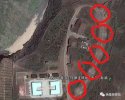It's confirmed for quite some time alreadyPer the above, a different Chinese-language source said Taiwan ordered just under 250 TC-2 SAMs with 30 or so launchers. Again, take with a pinch of salt.
Since the Army’s Chaparral missile system is getting obsolete, the military plans to purchase a "New Field Air Defense Weapon System" to replace it. This weapon system procurement project code-named "Falcon Project" includes 246 ground-type Sky Sword II (TC-2) missiles, 6 "bee-eye" radars and many other related subsystems, Part of the originally frozen budget has also been unfrozen after being approved by the Foreign Affairs and National Defense Committee of the Legislative Yuan. The whole case is expected to start production of 41 missiles in 2021, with the entire production completed in 2026.
The air defense of the Army Corps is currently dominated by the vehicle-mounted Avenger missile system and the Chaparral missile system. However, because the Chaparral missile system is getting obsolete, it is getting harder and harder to source spare parts. Maintenance cost has also been increasing year by year. Since the military did not propose a performance improvement plan for the Avenger system, the military plans to use a new domestic air defense weapon system to replace it.
According to the Ministry of National Defense’s open budget statement, the "New Field Air Defense Weapon System" project includes missiles, engagement control system, phased radar sub-systems and other equipment to replace old equipment in order to counter enemy aircraft, unmanned vehicles and cruise missiles. The missile system ensures the protection targets and the safety of the troops, with the total procurement budget reaching 14.32169 million yuan.
The Ministry of National Defense pointed out in the open budget statement that the procurement of the "New Field Air Defense Weapon System" includes: 6 sets of engagement control sub-systems, 6 sets of phased radar sub-systems, 29 sets of missile (firepower unit) sub-systems (including vehicles). and 246 missiles. The military also aims to build up training regimen, overall logistics support, various backup materials and allocate related funds. The whole case is expected to be completed in 2026.
The "New Field Air Defense Weapon System" is a new type of low-altitude short-range air defense system consisting of a mobile air-defense phased radar, ground-type Sky Sword II (TC-2) missile and a domestic 40mm autocannon. It has area air defense capabilities and is a system that combines both missile launcher and anti-air gun. The ground-type Sky Sword II (TC-2) missile is a derivative of the air-launched Sky Sword II (TC-2) missile, with an effective range of 15 kilometers and a maximum range of 30 to 45 kilometers.















